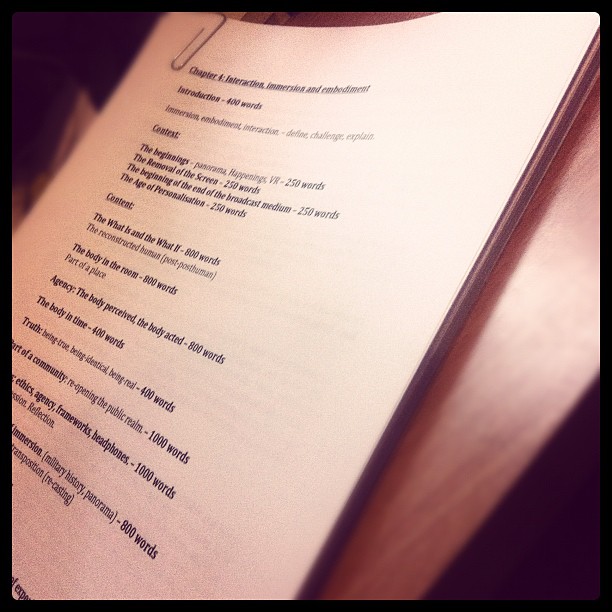 Image shared by _blank [AT] null66913 on flickr via Creative Commons **
Image shared by _blank [AT] null66913 on flickr via Creative Commons **
This is not another fucking blog post about how theatres should use twitter. This is a reaction to a small notion in a recent Graun theatre blog post by Lyn Gardner where she discuses the struggling London Fringe, and quotes Rebecca Atkinson-Lord of Oval House as saying that “There is now so much noise from social media that people just switch off and don’t listen any more”. It’s a safe assumption that by ‘social media’ we’re talking ‘Facebook, Twitter, and probably some copyrighted un-remixable images and video on Youtube and Flickr’ (Oh Snap). This is not a dig at Oval House, or Rebecca, just an argument drawn out of that sentiment about ‘noise’ across social media. What’s ‘noise’? Well it just so happens I’m in my last few weeks of three years of studying digital culture and its effects on theatre and I’ve read a few things about the Information Age and all that, I have a definition:
Noise is data without context.
Information is data with it.
What theatre social media accounts (for the most part) offer is noise. Spam, if you like. If it’s not couched in context, it’s not relevant or interesting, it’s not information, it’s noise*. Endless positive review RTs, the same show info again and again. Frozen smiles conjured by relentlessly positive and chirpy updates, and the likelihood that some poor intern or official office ‘young person’ has been sat in front of the computer and given pre-approved content to whittle down to 140 characters. Noise. It’s not the audience’s fault that’s all you deliver.
We don’t live in the information age. We live in a noisy data-ridden one. Our lives are noisier and noisier, and only through tools like personalisation are we able to filter it back into information. By ‘personalisation’ I mean things like subscribing to people you like on twitter, and getting your information via word of mouth and recommendation and WAIT A MINUTE. THIS IS JUST LIKE HOW PEOPLE ACTED IN THE OLDEN DAYS.
*You can be clever here and talk about the pleasure in noise and noise-art like that of Cage and the Beats, or the non-sense of the Dada movement but that’s always couched in the context of the frame of art – it’s about enframing ‘noise’ to turn it back into beauty/art/information/a re-revelation of the things that daily effect us/a writhing in the pleasure of nothingness, all of which is a context, whether you like it or not. So ner.
I have a question for you:
Who told us these places were going to sell tickets?
Who told us these spaces were good places to try and sell things at all?
Because the act of selling is out of date.
Gone. Going, not dead, but dying. Continue reading Not another fucking blog post about how theatres should use twitter.

